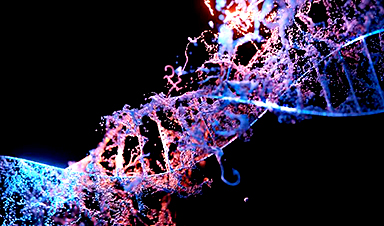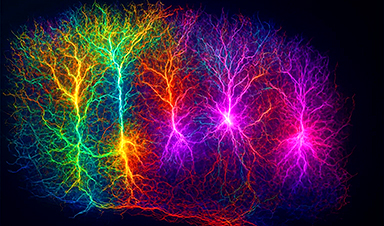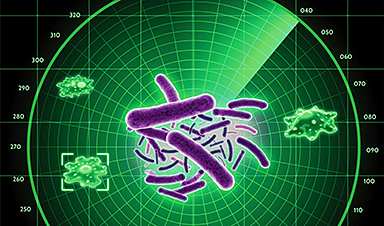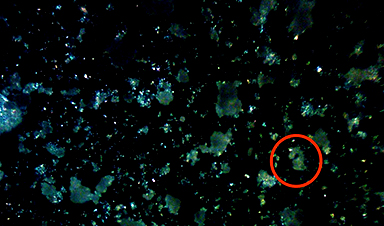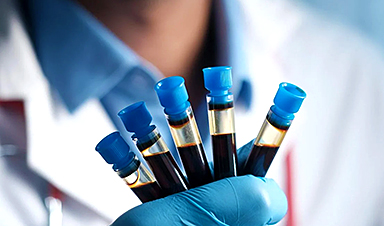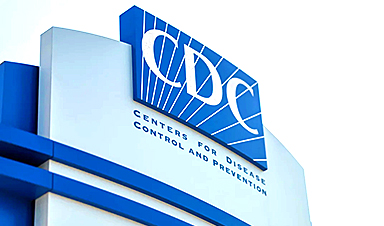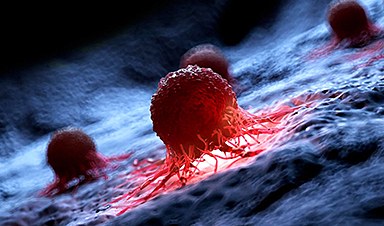In humans and other multicellular organisms, cells multiply. This defining feature allows embryos to grow into adulthood, and enables the healing of the many bumps, bruises and scrapes along the way.
Certain factors can cause cells to abandon this characteristic and enter a zombie-like state known as senescence where they persist but no longer divide to make new cells. Our bodies can remove these senescent cells that tend to pile up as we age. The older we get, however, the less efficient our immune systems become at doing so.
“In addition to no longer growing and proliferating, the other hallmark of senescent cells is that they have this inflammatory program causing them to secrete inflammatory molecules,” said Peter Adams, Ph.D., director and professor of the Cancer Genome and Epigenetics Program at Sanford Burnham Prebys and senior and co-corresponding author of the study.
Cells “running” this inflammatory program are considered to exhibit the senescence-associated secretory phenotype (SASP). Too many cells with SASP secreting inflammatory molecules can contribute to chronic inflammation in the body. This pervasive inflammation—called “inflammaging”—has been linked to many age-related diseases.
Scientists at Sanford Burnham Prebys and collaborators across the country published findings in Nature Communications showing that the mitochondria powering our cells also control the ability of a DNA repair protein to suppress SASP, which may reduce or delay inflammaging.
The research team turned human cells senescent by exposing them to radiation and then used those cells to demonstrate that DNA fixer tumor protein p53 suppressed SASP and one of its triggering events, the formation of cytoplasmic chromatin fragments (CCF).
These fragments are bits of damaged DNA that have been spewed from the cells’ nuclei into the gel-like cytoplasm that occupies the space in the cell between the outer membrane and central nucleus. The presence of DNA where it does not belong can trigger the immune system and contribute to SASP.
The scientists validated their findings in mice by treating them with a drug developed by cancer researchers to activate p53 as a way of suppressing tumors. In aged mice, the drug did not reduce the number of senescent cells but instead reversed the cellular signature that marks age-associated SASP, potentially stopping the inflammatory pollution that can lead to inflammaging.
In addition, the investigators discovered that senescent cells suffer from dysfunction in the mitochondria, serving as cells’ primary source of energy. Stressed mitochondria can cause senescent cells to form CCF and dampen the expression of the gene carrying the blueprint for p53.
“Altogether, we’ve identified a cellular circuit capable of promoting DNA repair and genome integrity while suppressing the dangerous inflammatory feature of senescent cells that contribute to age-related diseases,” said Karl Miller, Ph.D., staff scientist in the Adams lab at Sanford Burnham Prebys and lead and co-corresponding author of the study.
“We also have shown that this pathway can be modified by existing drugs in cultured cells and mice, so it may be possible to one day design a treatment that targets p53 to promote healthier aging.”
More information: Karl N. Miller et al, p53 enhances DNA repair and suppresses cytoplasmic chromatin fragments and inflammation in senescent cells, Nature Communications (2025). DOI: 10.1038/s41467-025-57229-3
News
A Grain of Brain, 523 Million Synapses, Most Complicated Neuroscience Experiment Ever Attempted
A team of over 150 scientists has achieved what once seemed impossible: a complete wiring and activity map of a tiny section of a mammalian brain. This feat, part of the MICrONS Project, rivals [...]
The Secret “Radar” Bacteria Use To Outsmart Their Enemies
A chemical radar allows bacteria to sense and eliminate predators. Investigating how microorganisms communicate deepens our understanding of the complex ecological interactions that shape our environment is an area of key focus for the [...]
Psychologists explore ethical issues associated with human-AI relationships
It's becoming increasingly commonplace for people to develop intimate, long-term relationships with artificial intelligence (AI) technologies. At their extreme, people have "married" their AI companions in non-legally binding ceremonies, and at least two people [...]
When You Lose Weight, Where Does It Actually Go?
Most health professionals lack a clear understanding of how body fat is lost, often subscribing to misconceptions like fat converting to energy or muscle. The truth is, fat is actually broken down into carbon [...]
How Everyday Plastics Quietly Turn Into DNA-Damaging Nanoparticles
The same unique structure that makes plastic so versatile also makes it susceptible to breaking down into harmful micro- and nanoscale particles. The world is saturated with trillions of microscopic and nanoscopic plastic particles, some smaller [...]
AI Outperforms Physicians in Real-World Urgent Care Decisions, Study Finds
The study, conducted at the virtual urgent care clinic Cedars-Sinai Connect in LA, compared recommendations given in about 500 visits of adult patients with relatively common symptoms – respiratory, urinary, eye, vaginal and dental. [...]
Challenging the Big Bang: A Multi-Singularity Origin for the Universe
In a study published in the journal Classical and Quantum Gravity, Dr. Richard Lieu, a physics professor at The University of Alabama in Huntsville (UAH), which is a part of The University of Alabama System, suggests that [...]
New drug restores vision by regenerating retinal nerves
Vision is one of the most crucial human senses, yet over 300 million people worldwide are at risk of vision loss due to various retinal diseases. While recent advancements in retinal disease treatments have [...]
Shingles vaccine cuts dementia risk by 20%, new study shows
A shingles shot may do more than prevent rash — it could help shield the aging brain from dementia, according to a landmark study using real-world data from the UK. A routine vaccine could [...]
AI Predicts Sudden Cardiac Arrest Days Before It Strikes
AI can now predict deadly heart arrhythmias up to two weeks in advance, potentially transforming cardiac care. Artificial intelligence could play a key role in preventing many cases of sudden cardiac death, according to [...]
NanoApps Medical is a Top 20 Feedspot Nanotech Blog
There is an ocean of Nanotechnology news published every day. Feedspot saves us a lot of time and we recommend it. We have been using it since 2018. Feedspot is a freemium online RSS [...]
This Startup Says It Can Clean Your Blood of Microplastics
This is a non-exhaustive list of places microplastics have been found: Mount Everest, the Mariana Trench, Antarctic snow, clouds, plankton, turtles, whales, cattle, birds, tap water, beer, salt, human placentas, semen, breast milk, feces, testicles, [...]
New Blood Test Detects Alzheimer’s and Tracks Its Progression With 92% Accuracy
The new test could help identify which patients are most likely to benefit from new Alzheimer’s drugs. A newly developed blood test for Alzheimer’s disease not only helps confirm the presence of the condition but also [...]
The CDC buried a measles forecast that stressed the need for vaccinations
This story was originally published on ProPublica, a nonprofit newsroom that investigates abuses of power. Sign up to receive our biggest stories as soon as they’re published. ProPublica — Leaders at the Centers for Disease Control and Prevention [...]
Light-Driven Plasmonic Microrobots for Nanoparticle Manipulation
A recent study published in Nature Communications presents a new microrobotic platform designed to improve the precision and versatility of nanoparticle manipulation using light. Led by Jin Qin and colleagues, the research addresses limitations in traditional [...]
Cancer’s “Master Switch” Blocked for Good in Landmark Study
Researchers discovered peptides that permanently block a key cancer protein once thought untreatable, using a new screening method to test their effectiveness inside cells. For the first time, scientists have identified promising drug candidates [...]
